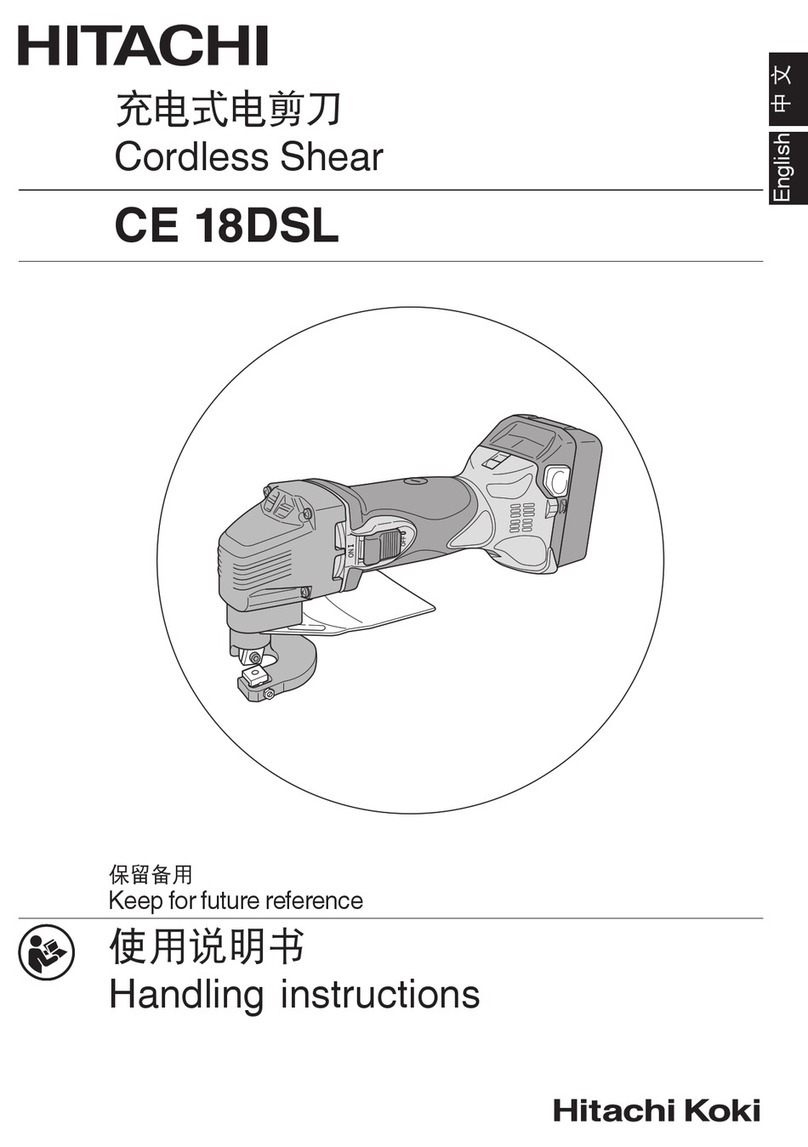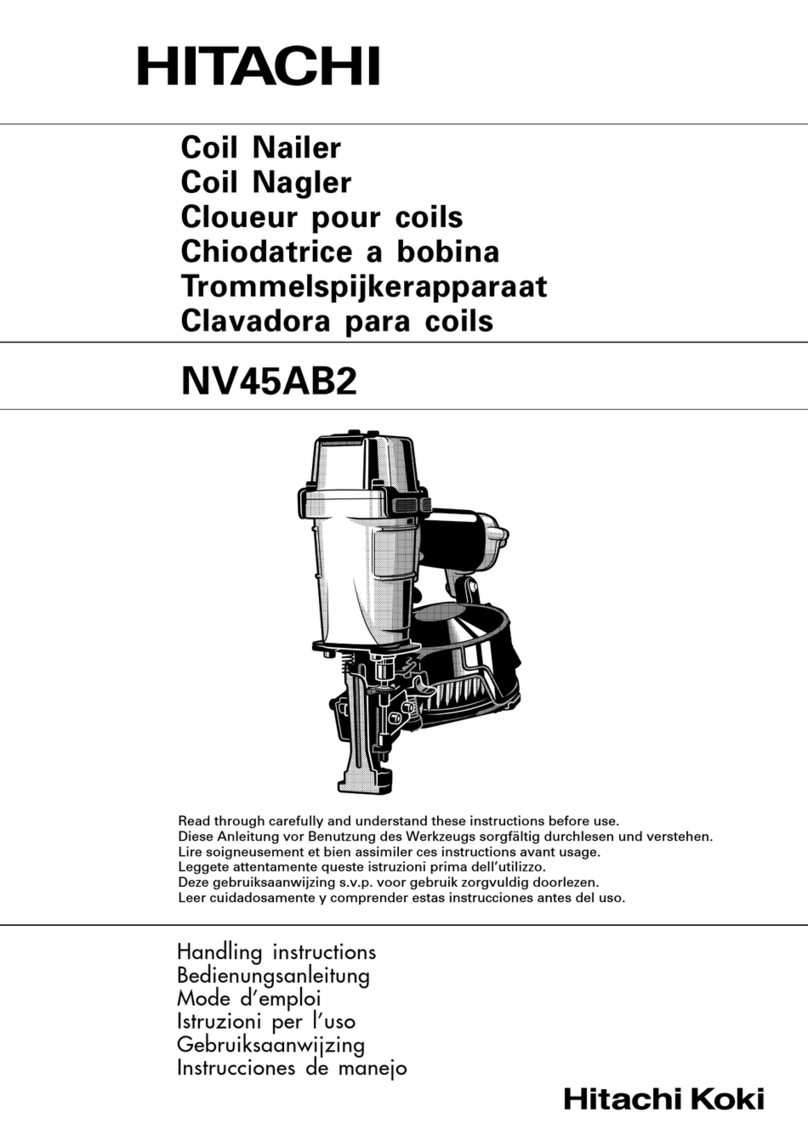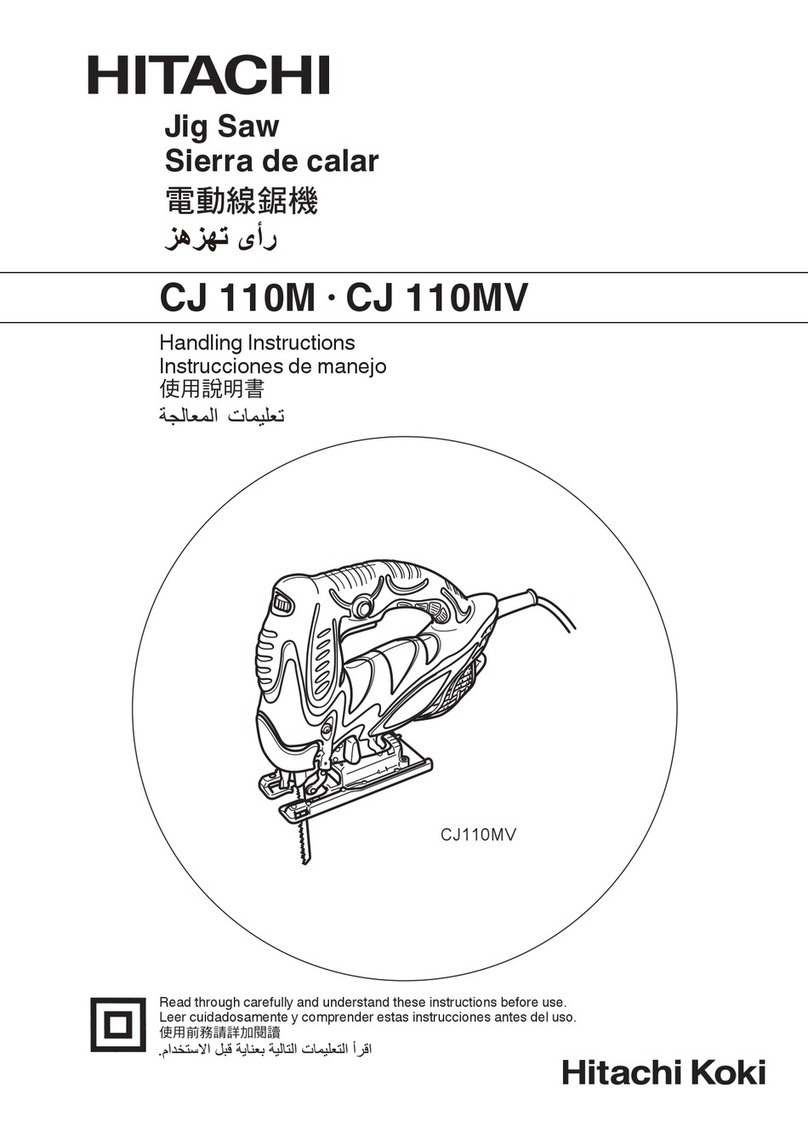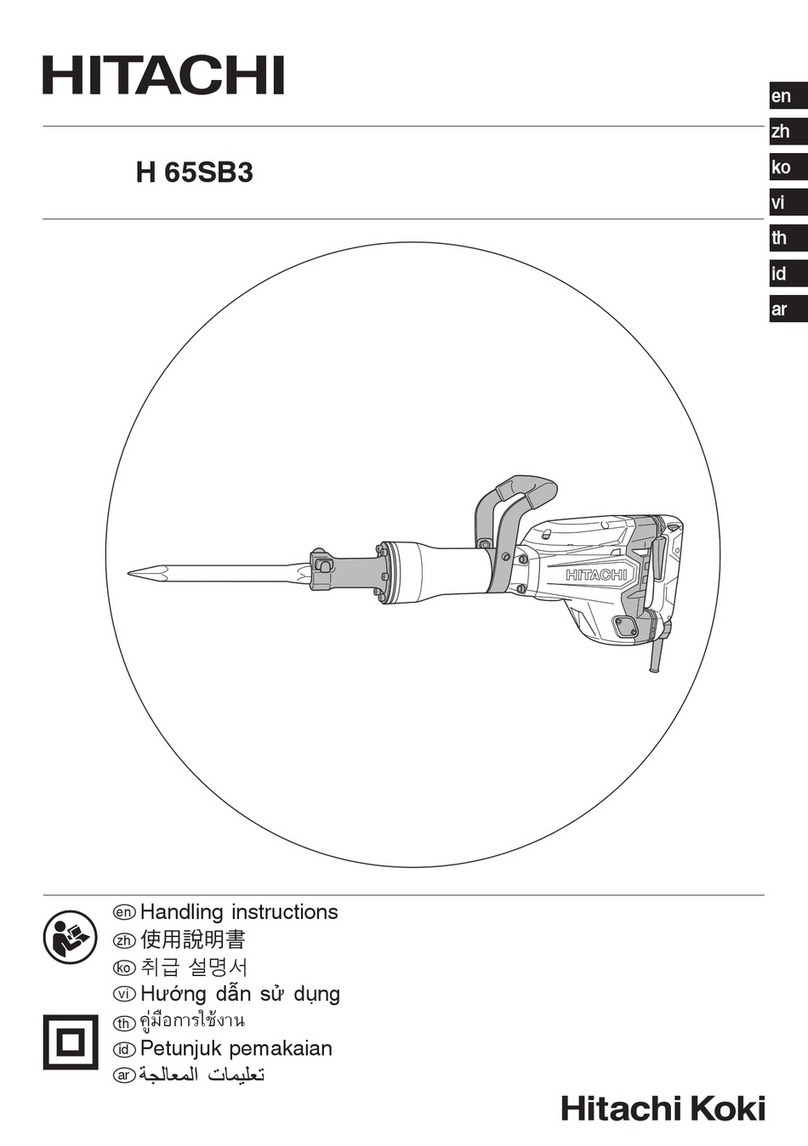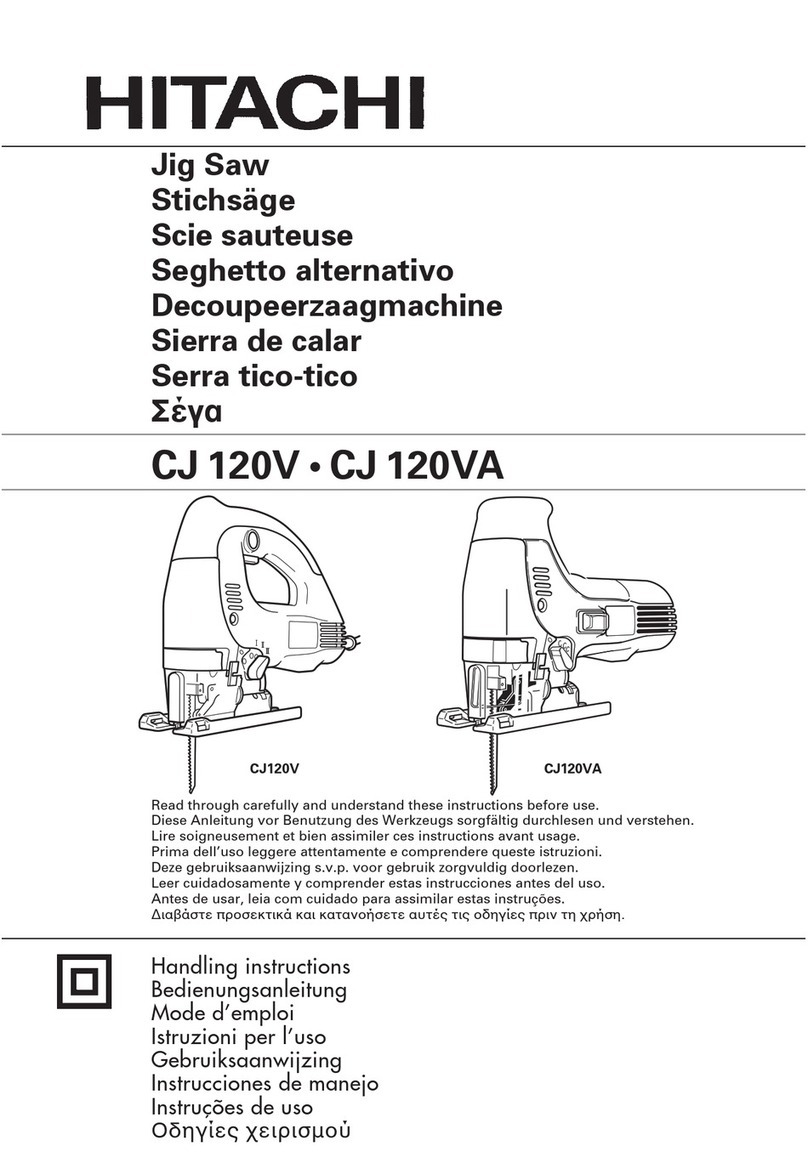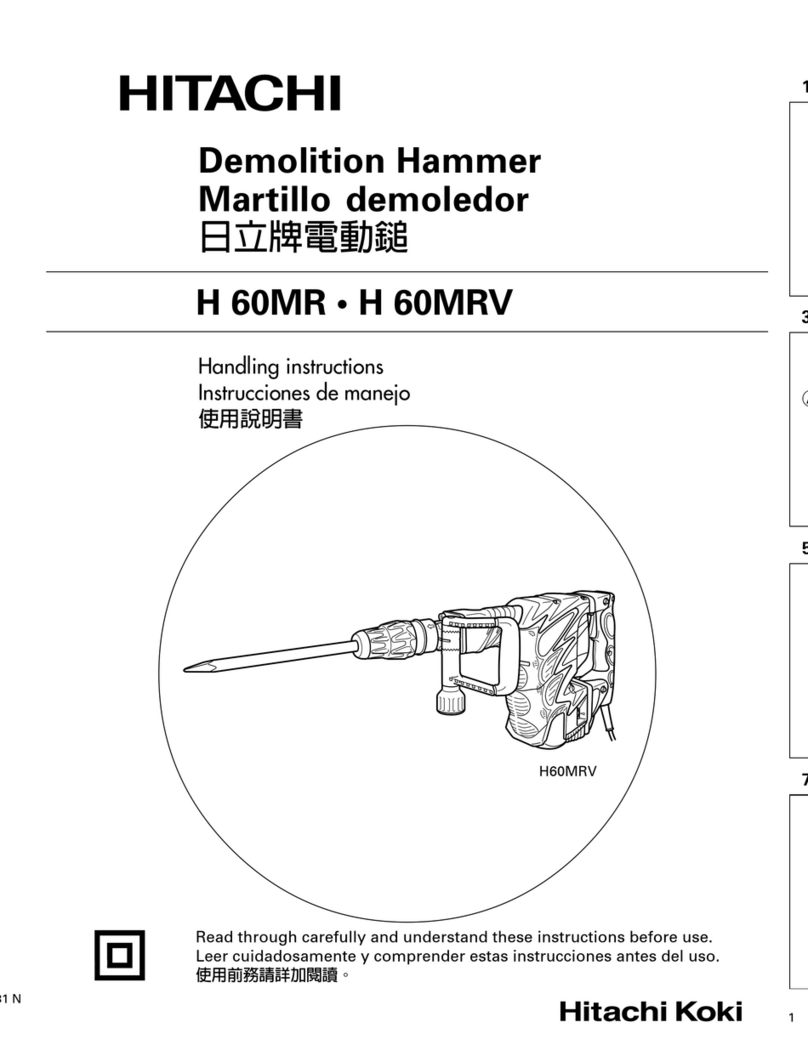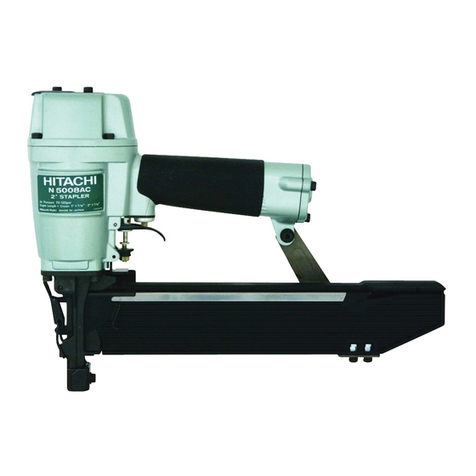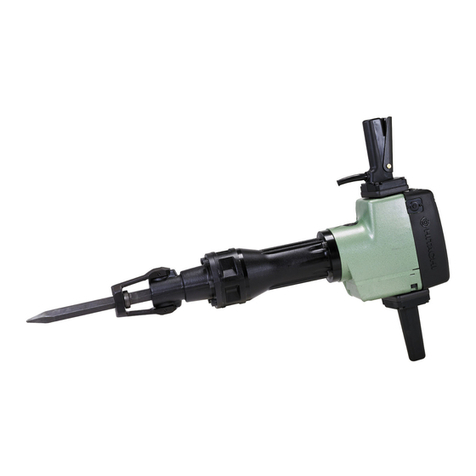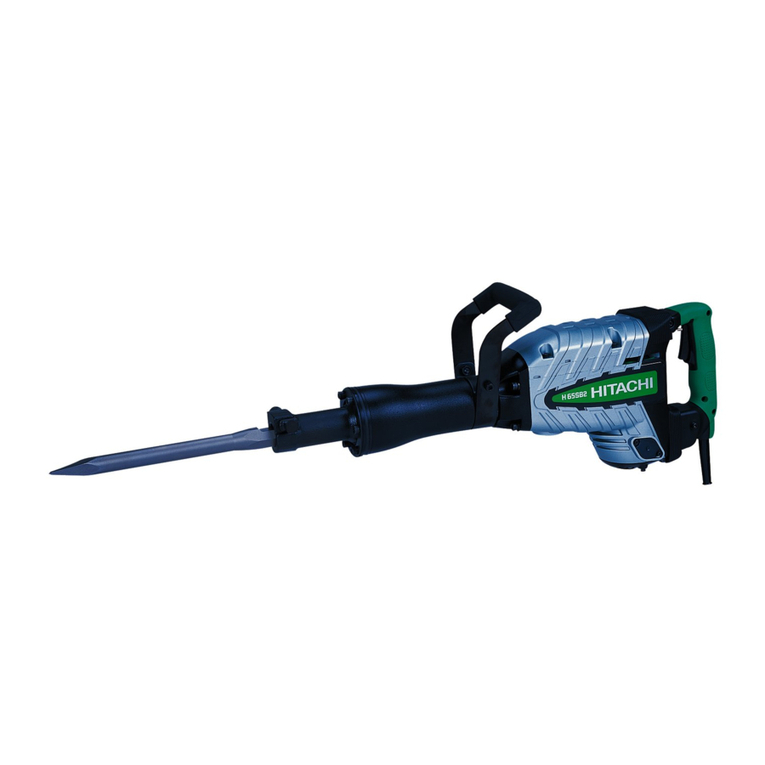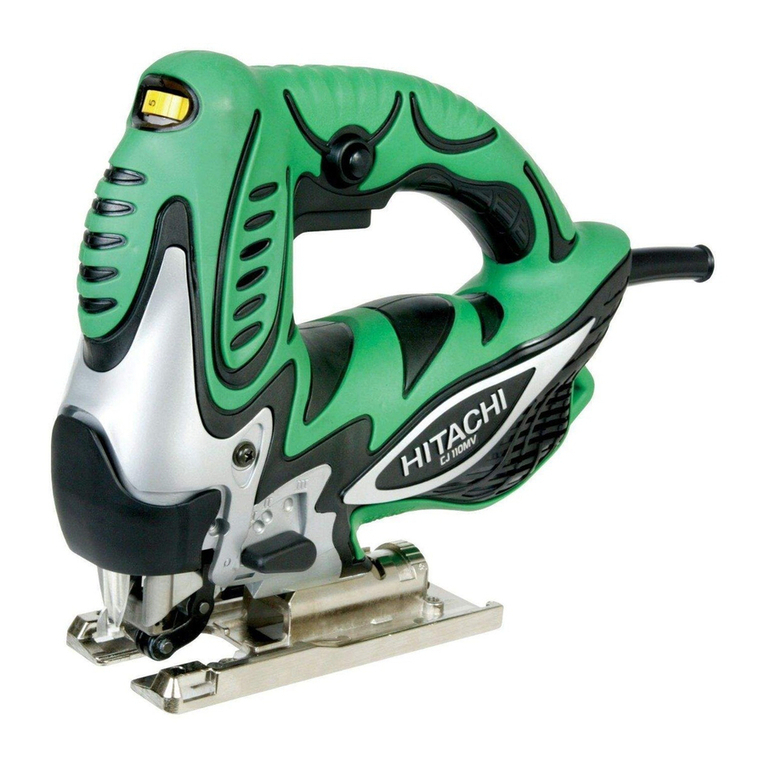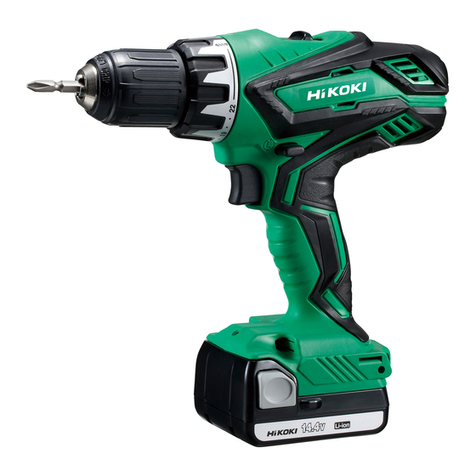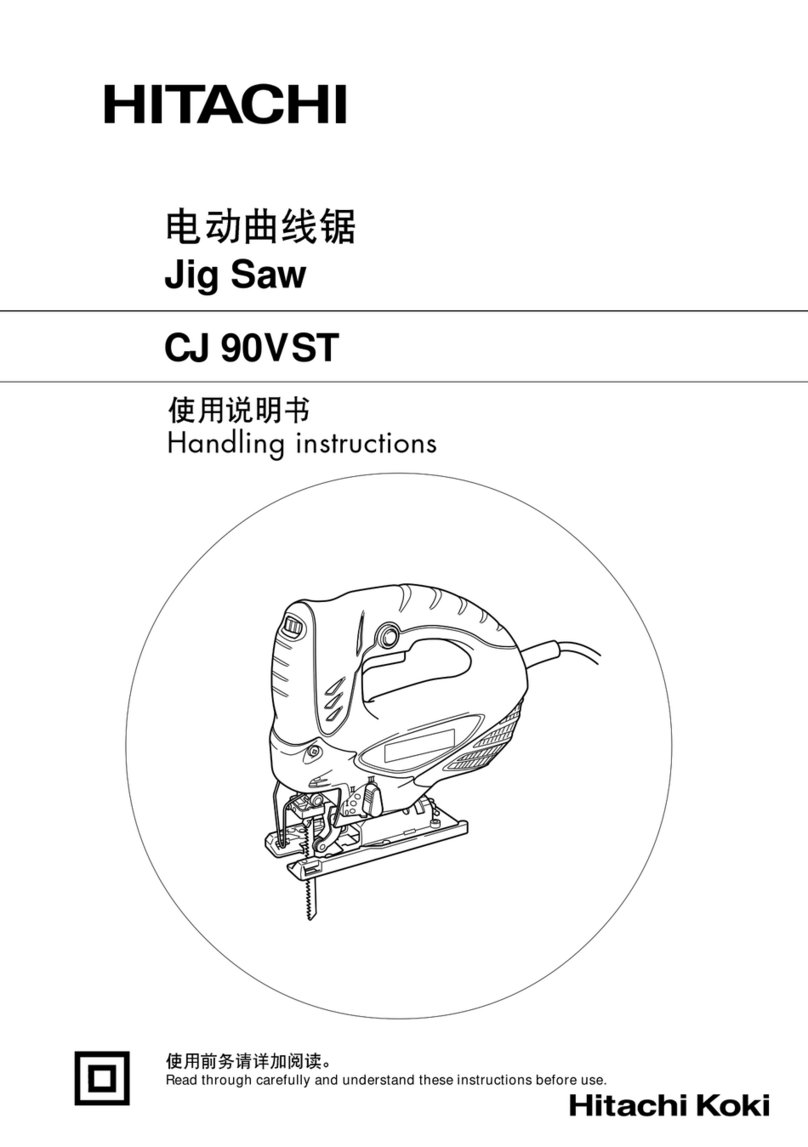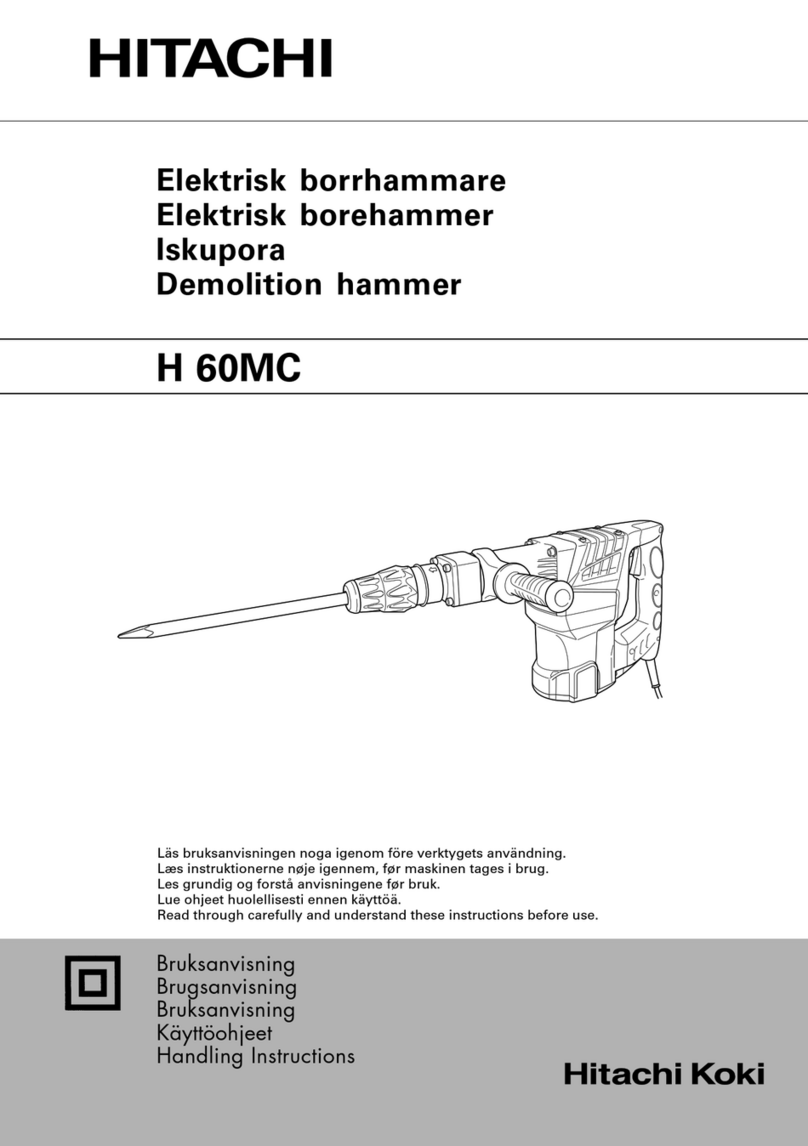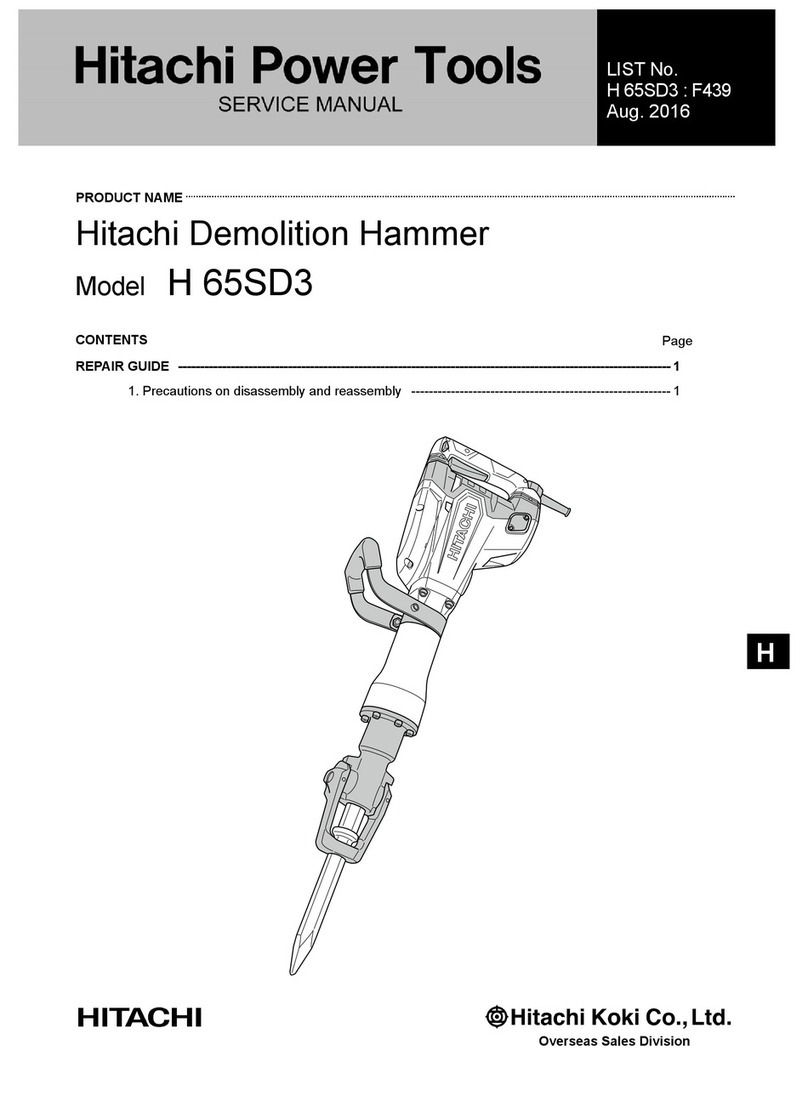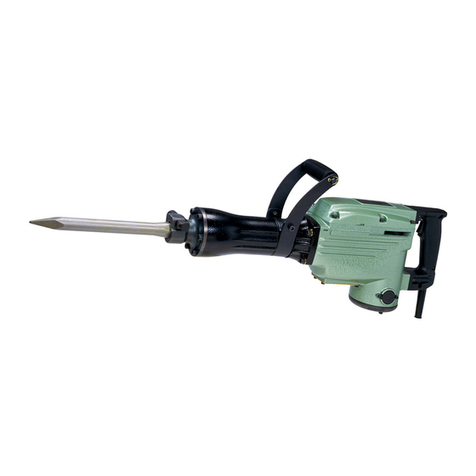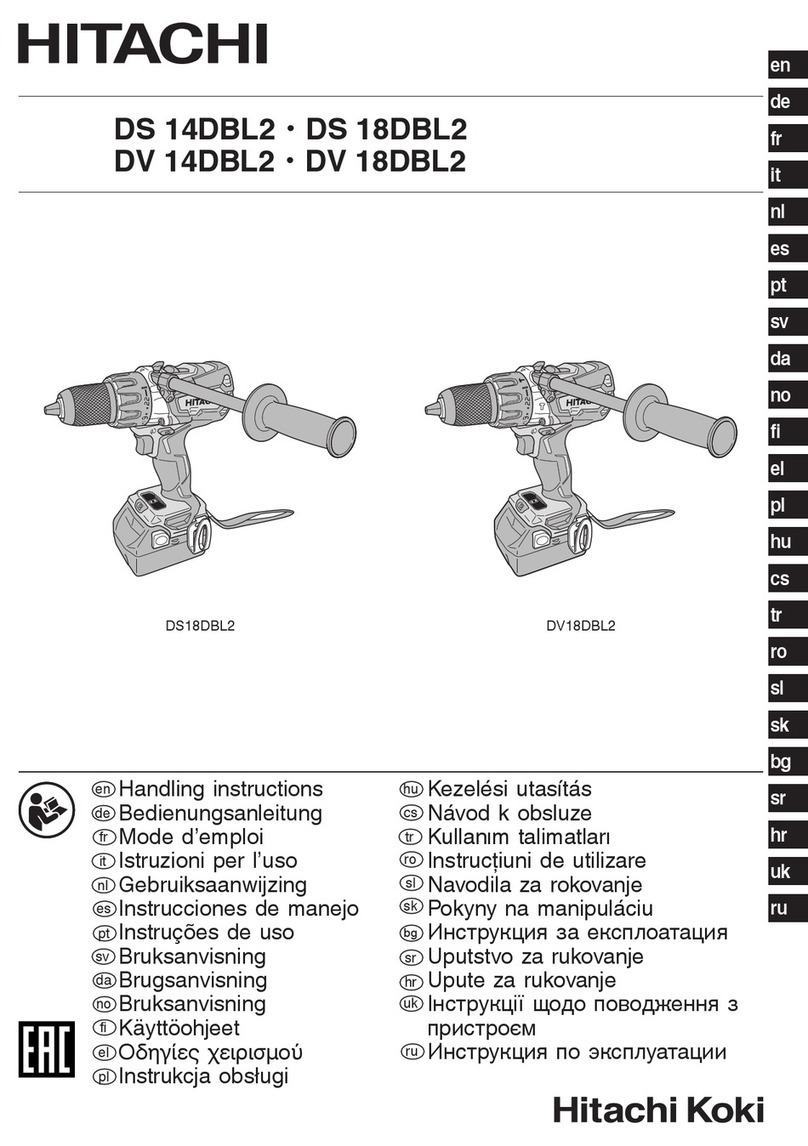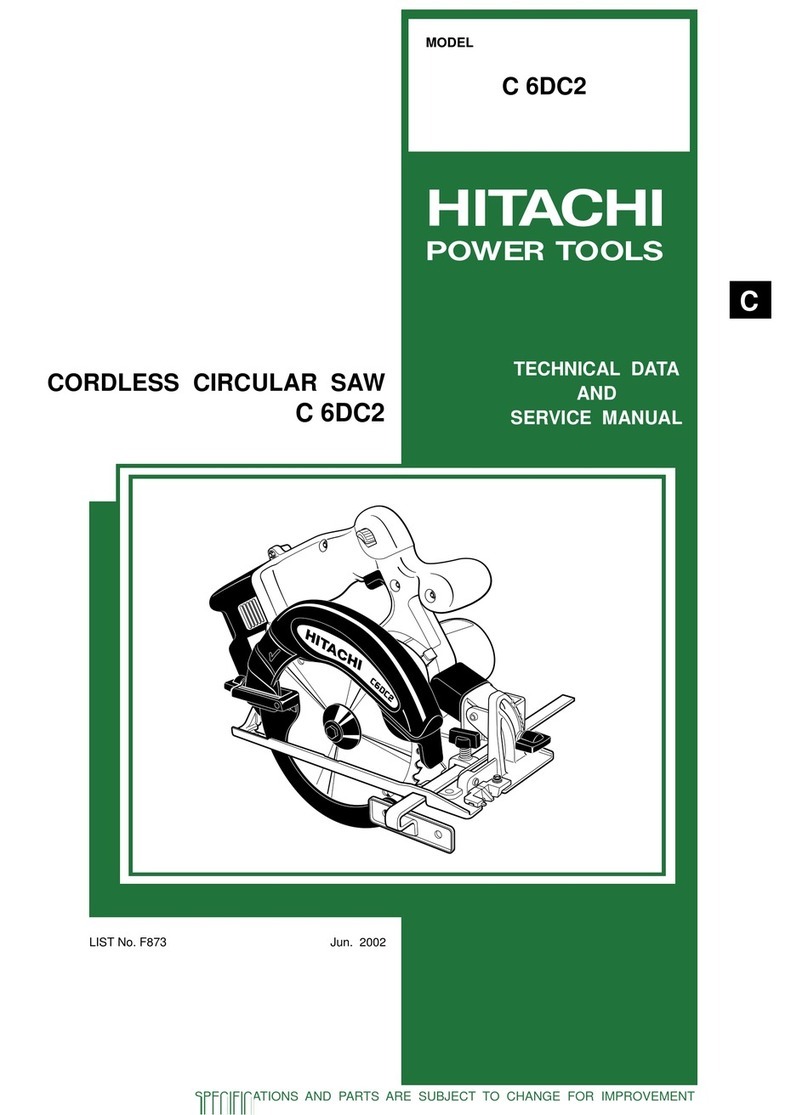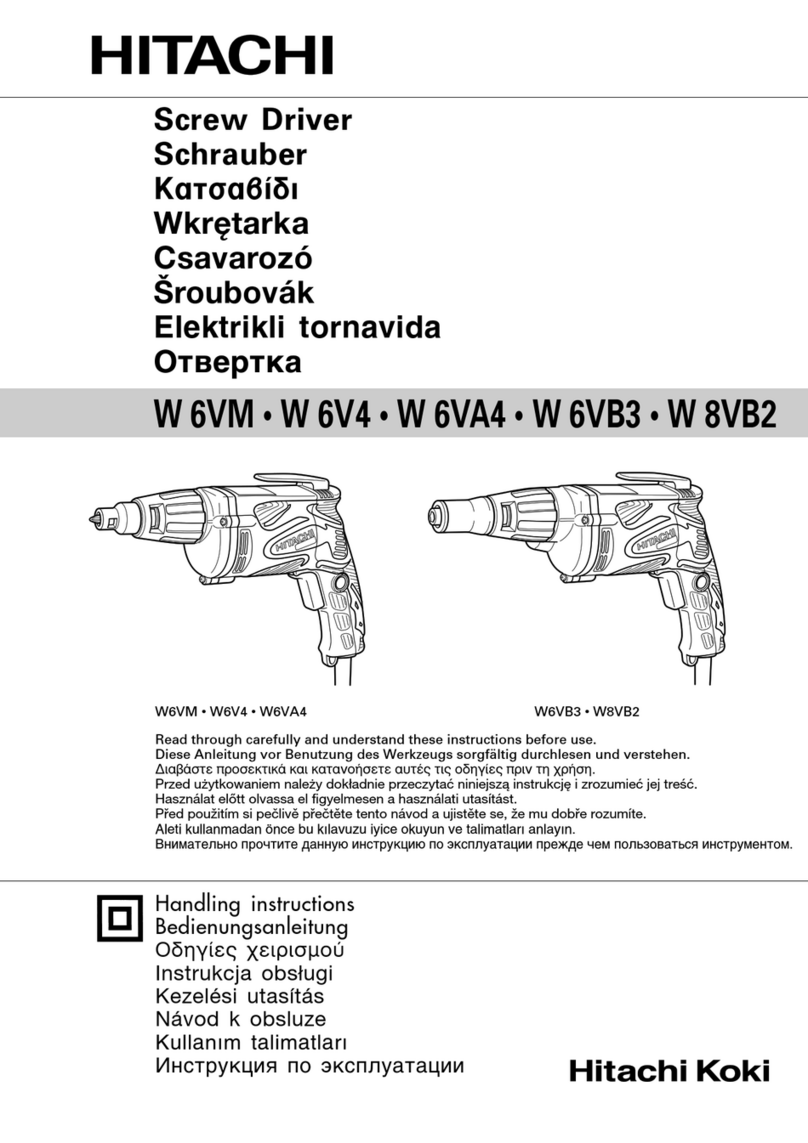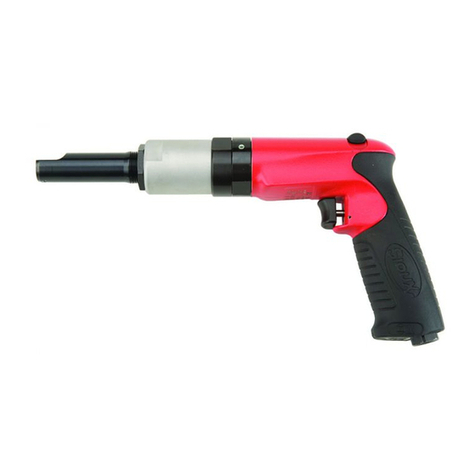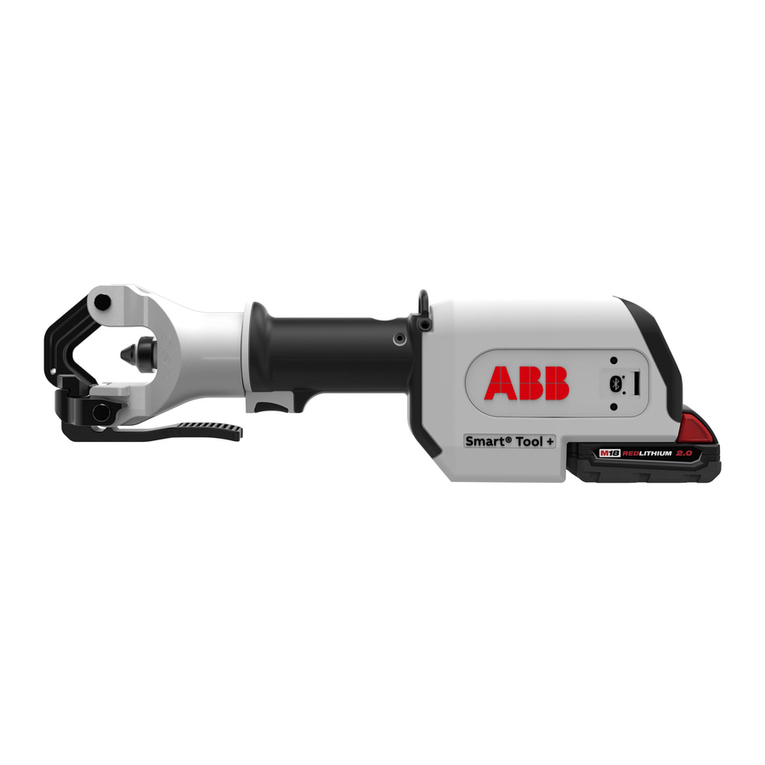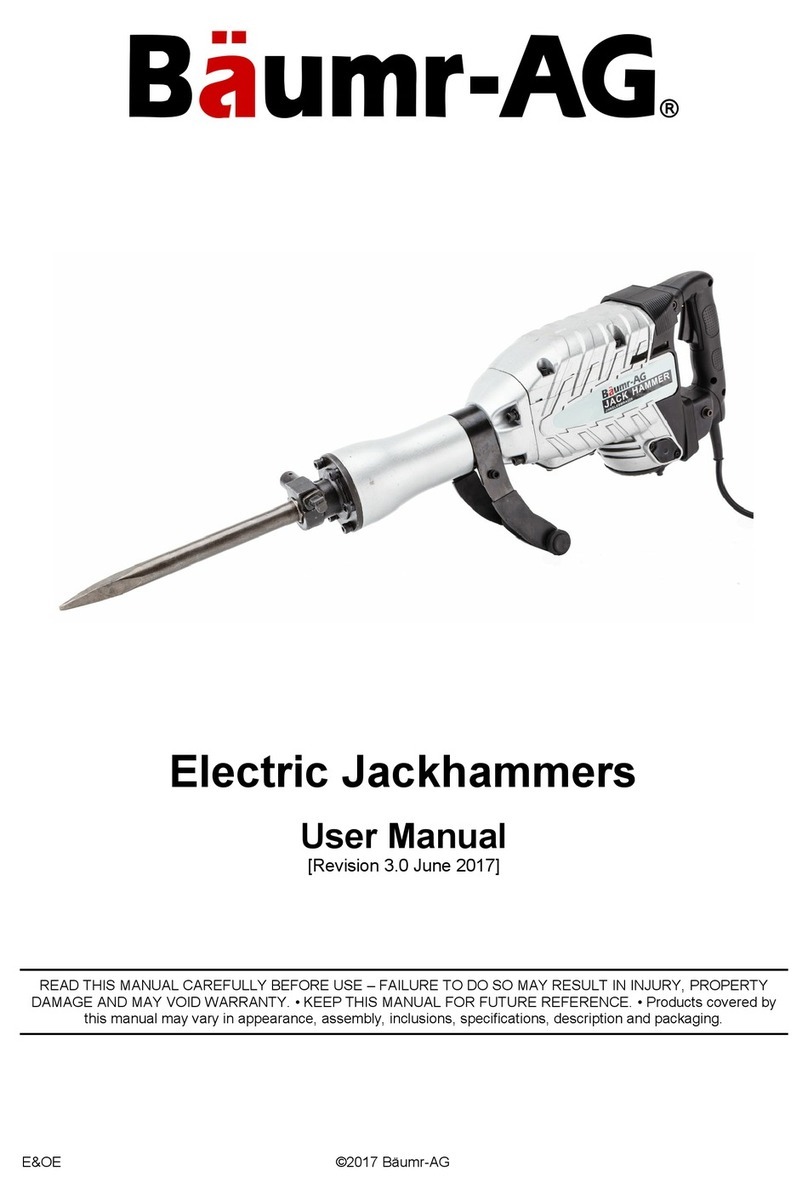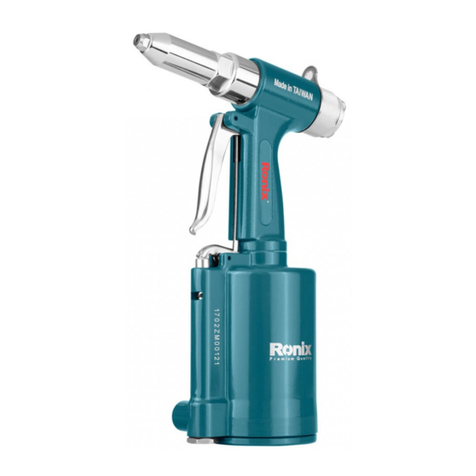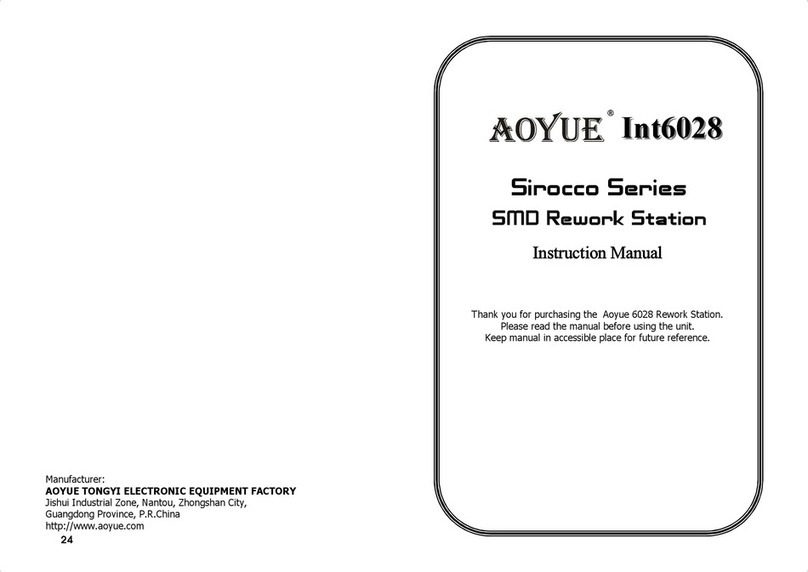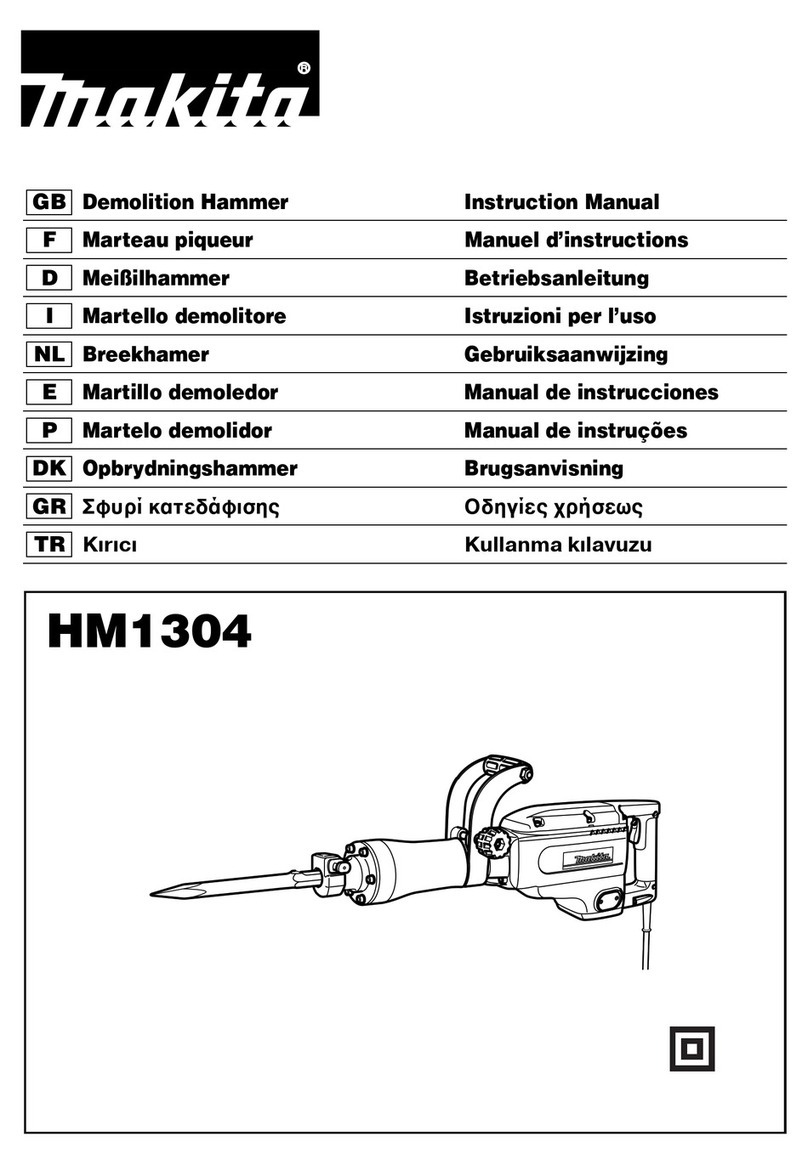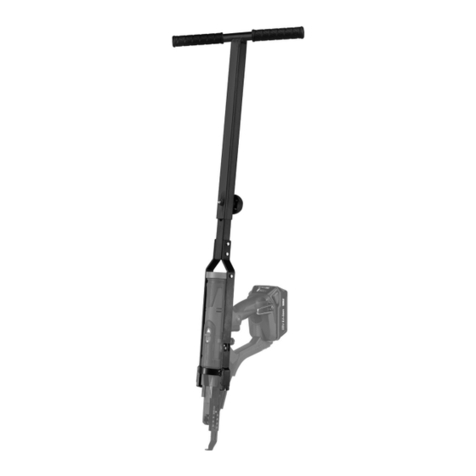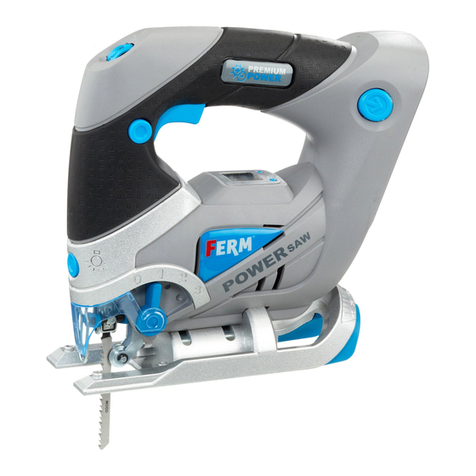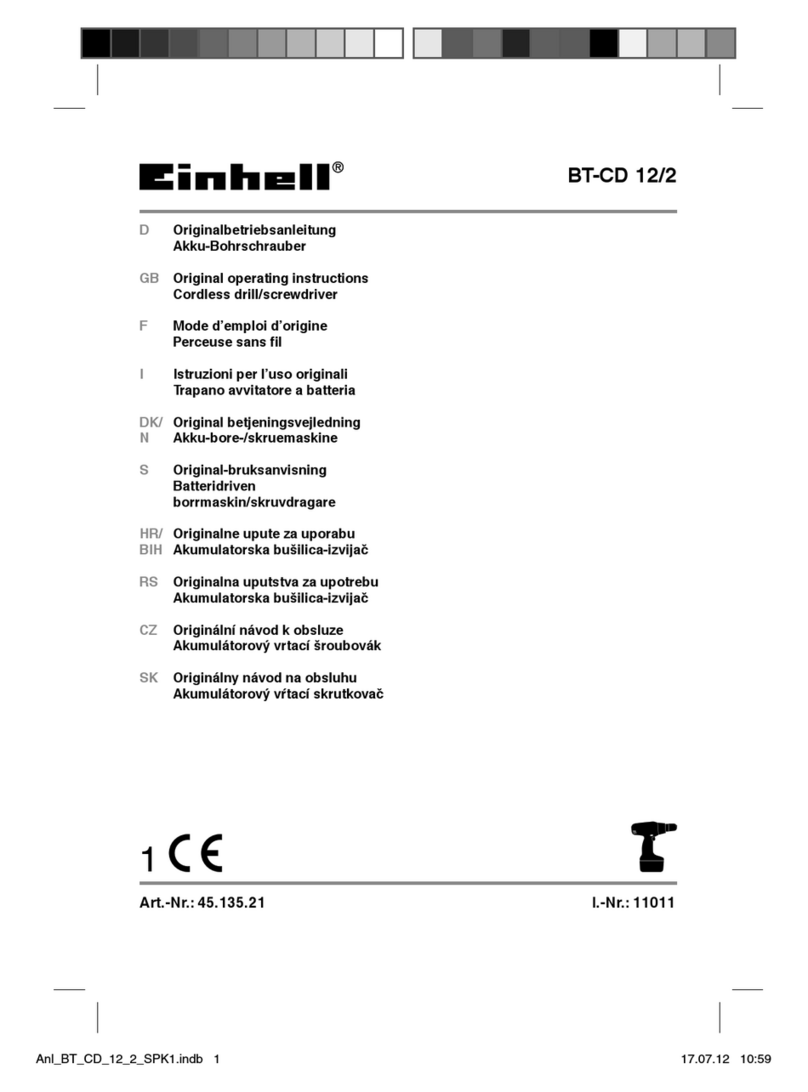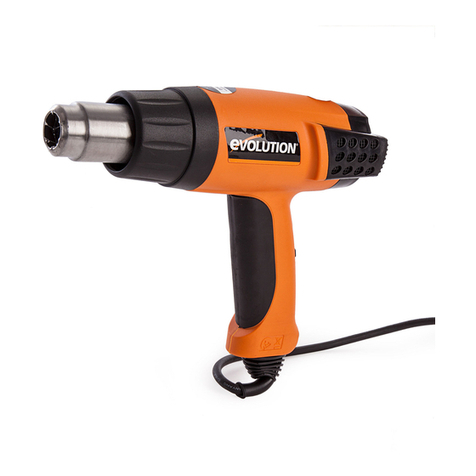
English Page
IMPORTANT SAFETY INFORMATION ................ 3
MEANINGS OF SIGNAL WORDS ........................ 3
SAFETY ...................................................................... 4
GENERAL SAFETY RULES ................................... 4
SPECIFIC SAFETY RULES AND SYMBOLS......... 6
DOUBLE INSULATION FOR SAFER
OPERATION ................................................... 7
USE OF EXTENSION CORD ................................. 8
FUNCTIONAL DESCRIPTION.................................... 9
NAME OF PARTS .................................................. 9
SPECIFICATIONS .................................................. 9
Page
ASSEMBLY AND OPERATION ............................... 10
APPLICATIONS ................................................... 10
PRIOR TO OPERATION ....................................... 10
INSTALLING AND REMOVING BITS ................. 11
HOW TO USE THE ROOTER............................... 12
USING THE OPTIONAL ACCESSORIES ............ 15
MAINTENANCE AND INSPECTION ....................... 16
ACCESSORIES ......................................................... 17
STANDARD ACCESSORIES ............................... 17
OPTIONAL ACCESSORIES ................................. 18
PARTS LIST.............................................................. 55
TABLE DES MATIERES
Français Page
INFORMATIONS IMPORTANTES
DE SÉCURITÉ............................................... 19
SIGNIFICATION DES MOTS
D’AVERTISSEMENT .................................... 19
SECURITE ................................................................ 20
CONSIGNES DE SÉCURITÉGÉNÉRALES
............. 20
REGLES DE SECURITE SPECIFIQUES
ET SYMBOLES ............................................. 22
DOUBLE ISOLATION POUR UN
FONCTIONNEMENT PLUS SUR ................. 24
UTILISATION D’UN CORDON DE RALLONGE ...
24
DESCRIPTION FONCTIONNELLE ........................... 26
NOM DES PARTIES ............................................ 26
SPECIFICATIONS ................................................ 26
Page
ASSEMBLAGE ET FONCTIONNEMENT ................ 27
APPLICATIONS ................................................... 27
AVANT L’UTILISATION ...................................... 27
INSTALLATION ET RETRAIT DE LA MECHE..... 28
UTILISATION DE DETOUREUSE ....................... 28
UTILISATION DES ACCESSOIRES
EN OPTION................................................... 32
ENTRETIEN ET INSPECTION .................................. 34
ACCESSOIRES ......................................................... 35
ACCESSOIRES STANDARD ............................... 35
ACCESSOIRES SUR OPTION ............................. 36
LISTE DES PIÈCES................................................... 55
ÍNDICE
Español Página
INFORMACIÓN IMPORTANTE
SOBRE SEGURIDAD .................................... 37
SIGNIFICADO DE LAS PALABRAS
DE SEÑALIZACIÓN ...................................... 37
SEGURIDAD............................................................. 38
NORMAS GENERALES DE SEGURIDAD........... 38
NORMAS Y SÍMBOLOS
ESPECÍFICOS DE SEGURIDAD ................... 40
AISLAMIENTO DOBLE PARA OFRECER
UNA OPERACIÓN MÁS SEGURA .............. 42
UTILIZACIÓN DE UN CABLE PROLONGADOR...
42
DESCRIPCIÓN FUNCIONAL.................................... 44
NOMENCLATURA............................................... 44
ESPECIFICACIONES............................................ 44
Página
MONTAJE Y OPERACIÓN...................................... 45
APLICACIONES ................................................... 45
ANTES DE LA OPERACIÓN ................................ 45
INSTALACIÓN Y EXTRACCIÓN DE
LAS BROCAS ............................................... 46
CÓMO USAR LA FRESADORA .......................... 47
UTILIZACION DE LOS ACCESORIOS
OPCIONALES ............................................... 51
MANTENIMIENTO E INSPECCIÓN........................ 52
ACCESORIOS........................................................... 53
ACCESORIOS ESTÁNDAR ................................. 53
ACCESORIOS OPCIONALES .............................. 54
LISTA DE PIEZAS .................................................... 55
CONTENTS

